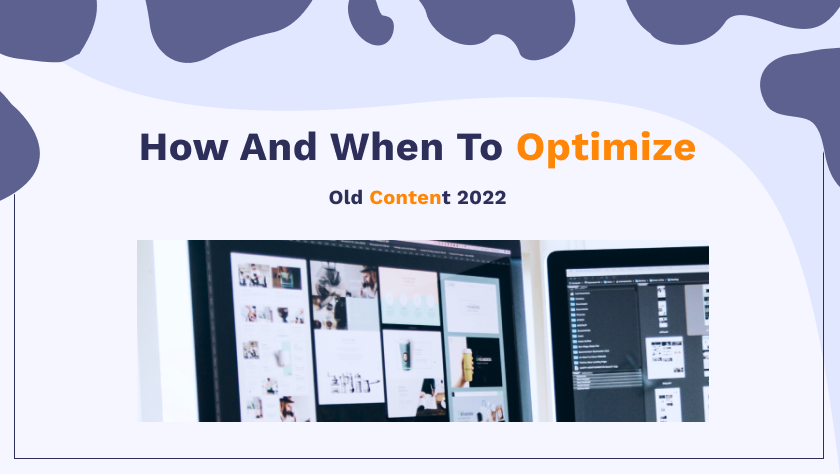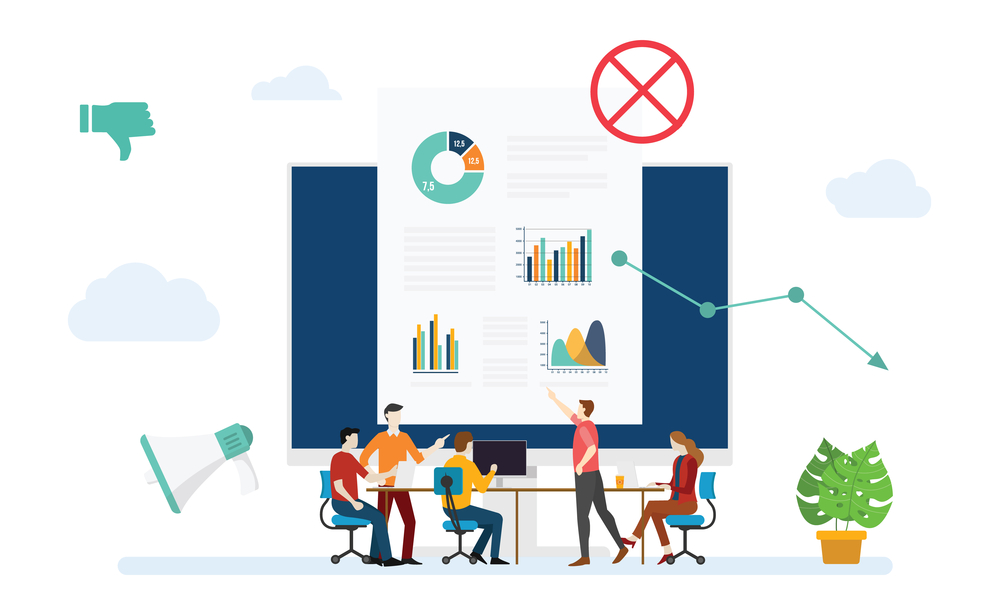As a business and website owner, you’re always looking for ways to optimize old content and get the most out of your website.
However, updating your old content regularly is also important as it ensures that your site is visible on the search results page and helps improve your site’s overall performance.
You may not be sure when or how to optimize your website content but we have created this guide to help you get started which will give you some tips on how and when to optimize your content so that you can get the most out of it.
What is content optimization?
Content optimization is the process of making your content more search engine friendly so that it can rank higher in search results. Content optimization can be done by adding target keywords, improving quality content, editing meta descriptions, optimizing images, and making sure that your website is receiving more organic traffic.
Why content optimization is important?
Optimizing content is essentially giving it a fresh coat of paint. When you optimize your content, you’re making it more visible to search engines which can help improve your website’s ranking. It helps to improve your website’s overall performance as it makes your site easier to navigate and attracts the target audience based on the user intent and search intent. The purpose of optimizing your content is to reach and influence the target audience that can possibly convert to leads, and that’s how content marketing strategies work.
How often should you optimize content?
How often you optimize content will depend on the nature of your content, the competitive topics in your niche, and how quickly the trend becomes outdated on search engines. However, we would recommend that content optimization should be done every 6 months so that it stays visible to search engines, is relevant to your target audience, attracts readers’ attention, and gains more organic traffic.
Why optimizing old content increases your website traffic?
Receiving organic traffic is the most valuable type of traffic as it’s more likely to convert into customers or sales. Here are a few reasons why optimizing your old content can help increase your website traffic.
Google loves fresh content
A website and content that is constantly being updated with new and relevant information is a positive signal to Google that the site is active and worth ranking highly in search results.
One of the best ways to keep your content fresh is by providing essential data and valuable information regularly. This tells Google that your website has trustworthy content, is up-to-date to users, and that you are continually working to improve and establish authority over your website, which can help boost your ranking.
Helps to improve your page’s authority
A website that has strong authority on its pages indicates that the website is likely to rank highly in search engine results pages (SERPs) and one way to increase your page authority, aside from creating content, is by updating old webpages and blog posts.
And if you optimize your old content and add new, quality, and relevant information to your site’s pages, this can effectively increase the authority of your web page which is a ranking factor for Google.
It attracts a new audience
Keeping your current audience engaged indicates that they are enjoying your content and updating and adding new and relevant information to your content will more likely garner more views and traffic.
When you optimize your old content, you are making it more likely to be found by new readers. If your content is updated and easy to find by using appropriate keywords based on the target audience’s search intent or search term, it is more likely to be read and attract new audiences.
Your content becomes unique
Optimized content makes it more unique and interesting to readers. By adding new information, images, or video content, you change the perspective of the piece and make it more original.
By producing content and adding relevant information to it, you are effectively making your content stand out from the rest. This can help your search engine optimization (SEO) by making it more relevant to search engines which increases traffic, engagement, and conversion to your site.
Your website becomes more valuable
Content optimization effectively increases the value of your website to both current and potential customers. This is because by improving the quality, relevance, and value of your content, you encourage readers to your site with engaging content which will more likely want people to visit and return.
A website that is constantly is more valuable than a website that is static and unchanging. This, in turn, can help improve your SEO as your site will be seen as being more relevant to search engines.
How to optimize your old content?
There are a few different ways that you can optimize your content, but here are some of the most effective methods that can give you a better understanding of your website’s overall content strategy.
Conduct content audit
Taking a look at your existing content, primary keyword, and which pieces are outdated or no longer relevant is the first important step. A content audit is an inventory of all the content on your website. It includes an assessment of each piece of content, looking at factors like a topic, tone, audience, target keyword, and links that can help identify which pieces need to be updated or removed entirely.
Create fresh content
Once you’ve identified which pieces of content need to be updated, the next step is to add or create content that is fresh. This can be in the form of new blog posts or visual content such as infographics, video content, and images. New content is always a good idea and adding fresh content will help to improve your website’s overall SEO and search engine visibility.
Place organic keywords
Keywords are an important part of SEO. Make sure that your target keyword is relevant and up-to-date. Organic keywords are simply the words or phrases that people use when they search for something on a search engine. When optimizing content for organic keywords, it’s likely that your content will be found by people who are looking for it in just a few clicks.
Use relevant keywords to headings
Including relevant keywords in your website content is an important part of SEO and one of the best places to add keywords is in your headings and titles. This tells search engines what your content or blog post is about. When people are searching for keywords related to your content, the search results will most likely show your website if the keywords are in the title tag or headings.
Improve links
If you have internal links in your content that are outdated or no longer relevant, improving these links can be a great way to optimize your content for SEO. Adding new links to your website, updating old links, adding link anchor text, and making sure that internal links are working properly and pointing to the right pages are all great ways to improve your website’s link profile.
Optimize meta description
Meta descriptions are the brief description of your page that appears in search engine results pages. These are important for SEO because they give people an idea of what your content is about and can help them decide whether or not to click on your link. Make sure that your meta descriptions are up-to-date and include relevant and targeted keywords.
Add graphics, images, and videos
Images and videos are a great way to add more content to your website and make it more visually appealing. People are more likely to engage and share your content which includes images, videos, and other forms of multimedia. Adding keywords and descriptions to your media can also help people find your content when they’re searching for keywords related to your business.
Reshare and promote your content
Once you’ve updated your content, make sure to promote it. One of the best ways to optimize your content for SEO is to simply share it again. When you do social sharing of content to different social media channels, in email marketing, or on other websites, you’re giving your content another chance to be seen by people that’s more likely will share and link to it.
Tips on how to optimize your content for SEO:
1. Research your keywords
Use free or paid SEO tools to find relevant keywords for your topic.
2. Make sure your website is mobile-friendly
Use Google’s Mobile-Friendly Test tool to see if your website passes the test.
3. Structure your content
Use proper title tags, headlines, subheadings, and bullet points to break up your text and build hierarchy.
4. Incorporate keywords
Use your keywords throughout your content, including in the title tags, headings, URLs, and body text.
5. Place graphics and videos
Images and videos can help break up your text and make your content more engaging.
6. Optimize images and media
Include keywords in image file names and alt tags to help search engines index your images.
7. Include a meta description
Include metadata that gives a brief description of your page that appears in SERP.
8. Add internal and external links
Link to relevant sites and your own pages to help crawlers understand what your content is about.
9. Promote your content
Use social media to promote your content and get it in front of as many people as possible.
10. Monitor your metrics
Use an analytics tool to track how your content and website are performing.
When should you optimize old content?
If you have old articles or blog posts on your site that are no longer receiving much traffic, it might be time to optimize as adding fresh content can breathe new life into an old piece. Optimizing your content regularly as part of your routine ensures that it is fresh and relevant for your audience.
But a good rule of thumb is to do it whenever you make significant changes to your website or blog such as adding new pages, changing your layout, or publishing new blog posts. You should also optimize your old content if you notice that your traffic has declined or if you’re not ranking as high in the search engines as you used to.
You can also optimize your content if you’re making changes to your target keywords, adding new keywords, changing your keyword density, or when you are improving your title tags, meta description, and URL structure.
Wrapping Up
In conclusion, the optimization process for old content can help increase your website traffic as it tells Google that your content is up-to-date which can be a time-consuming process–but worth it in the long run.
Google and other search engines are constantly tweaking their algorithms to reward pages that provide a great user experience. Part of providing a great user experience is ensuring that your content is fresh, relevant, and engaging.
When optimizing your content, be sure to keep your audience in mind and focus on making your content as helpful and relevant as possible. By following these tips, your content and website are SEO optimized, ready for your audience, rank high in search engines, and attract more traffic.
If you’re not sure where to start and how to optimize old content, you can always hire a professional SEO company or get a free consultation to help you.




